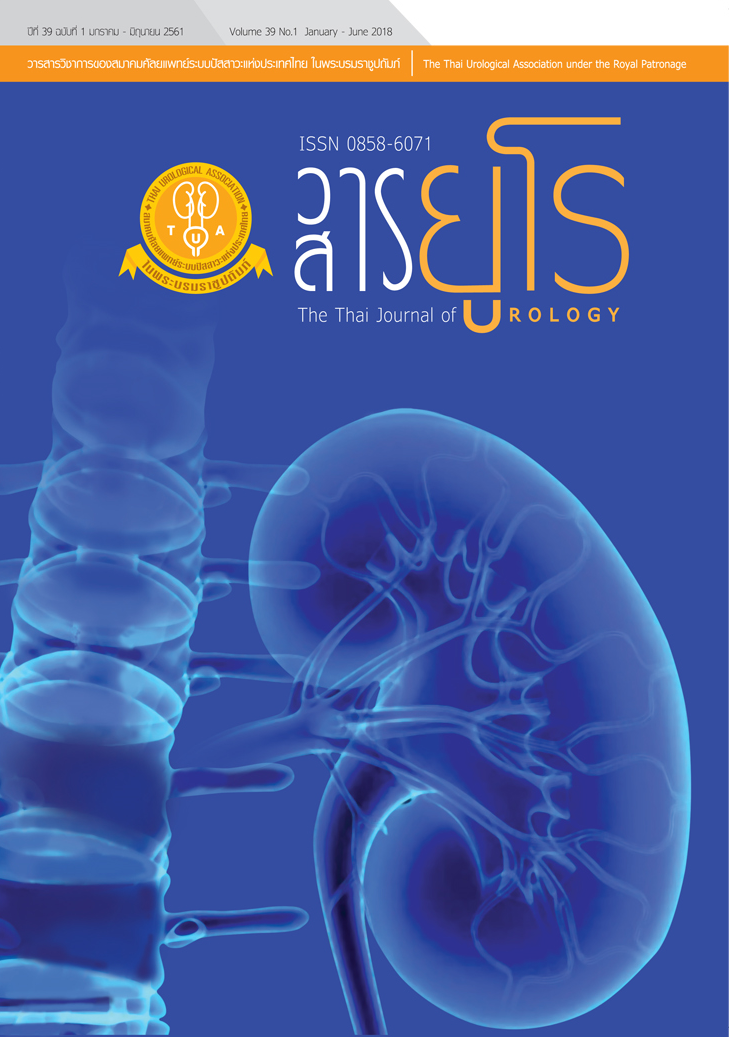Hybrid lithotripsy for a staghorn renal calculus: a novel minimally invasive approach.
Keywords:
Hybrid lithotripsy, Staghorn renal calculusAbstract
Objective: To present a new approach to treat a large renal calculus. Using a combination of extracorporeal shockwave lithotripsy and intracorporeal laser lithotripsy through flexible ureteroscopy.
Case presentation: A 60-year-old female presented with history of 2 occasions of acute left pyelonephritis and treated with intravenous antibiotic. IVP revealed normal nephrograms, incomplete double collecting system with mild dilatation of calyx at lower moiety of left kidney and staghorn stone, measured about 3.59 cm in longest diameter was noted. Therefore a combination of two procedures; shock wave lithotripsy or retrograde intrarenal surgery was set. After urine was sterile, the patient underwent surgery under general anesthesia. Shockwave lithotripsy was set first, followed by retrograde intrarenal surgery. There was no major perioperative complication. The patient came follow up 2 weeks after surgery, there were multiple small fragments in the calyx. However, no auxiliary procedure was required. Last
follow up was 4 months after surgery, there was no residual stone in the lower calyx. Stone analysis revealed pure struvite stone.
Conclusion: Hybrid lithotripsy is a new approach to treat large renal calculus.
Favorable outcomes were achieved with less invasiveness and acceptable stone free.
References
2. Srisubat A, Potisat S, Lojanapiwat B, et al. Extracorporeal shock wave lithotripsy (ESWL) versus percutaneous nephrolithotomy (PCNL) or retrograde intrarenal surgery (RIRS) for kidney stones. Cochrane Database Syst Rev. 2014 Nov 24;(11):CD007044.
3. Desai M, Sun Y, Buchholz N, et al. Treatment selection for urolithiasis: percutaneous nephro-lithomy, ureteroscopy, shock wave lithotripsy, and active monitoring. World J Urol. 2017;35(9): 1395-1399.



